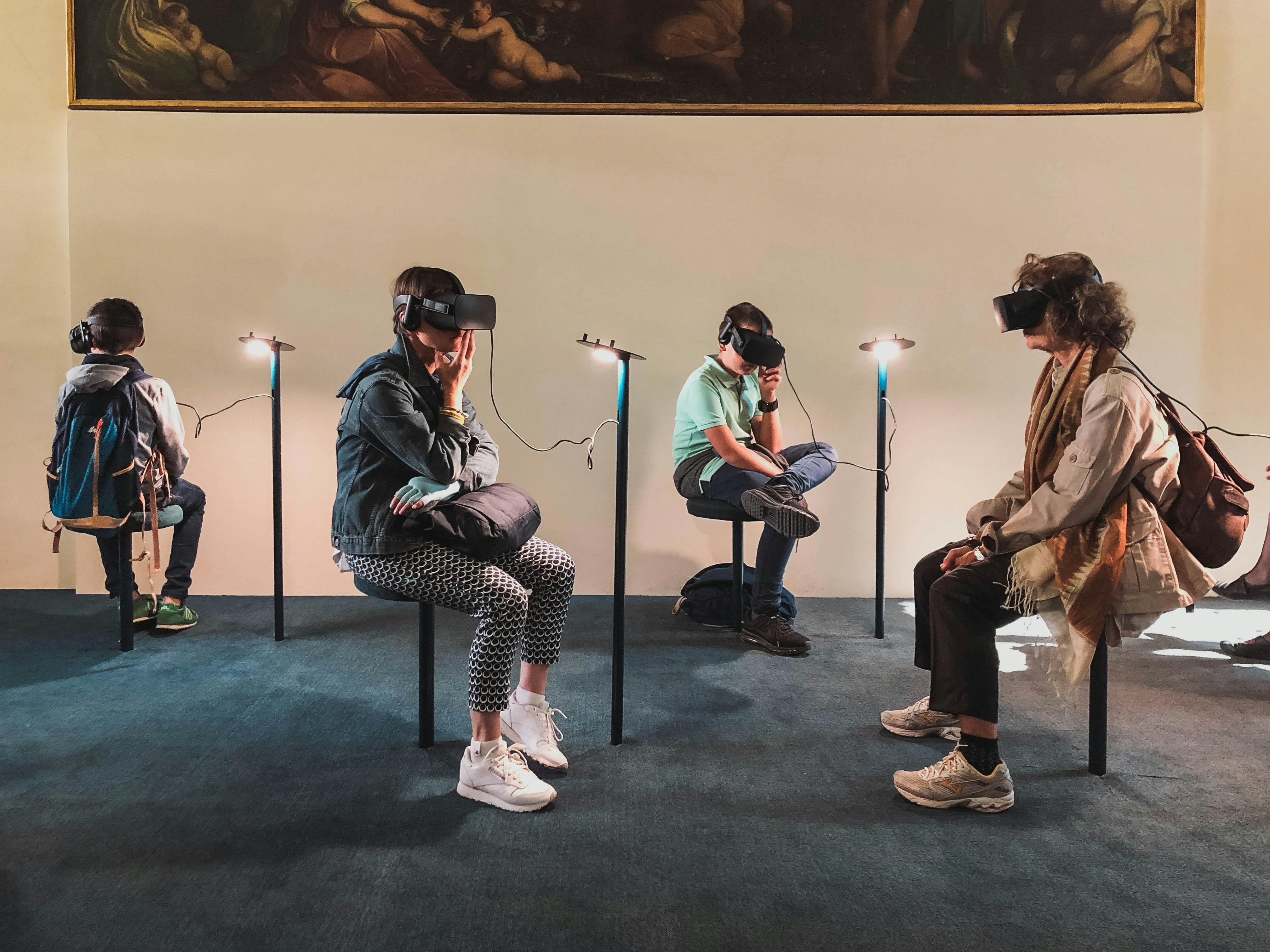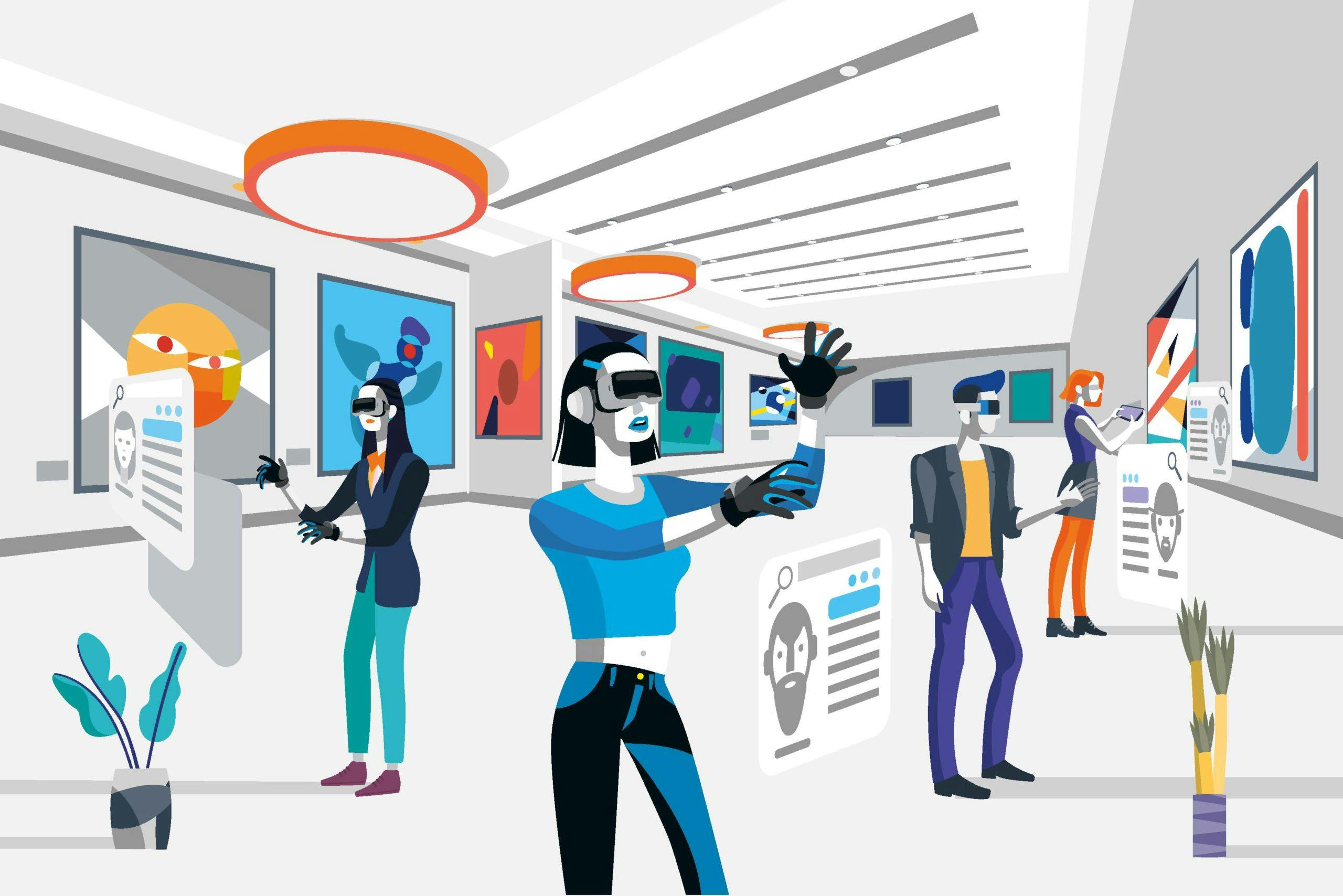It's the year 2030. You begin your day by drinking your morning coffee in Paris, you then visit your parents in India, watch a football match in Brazil during your lunch break and attend a business meeting in New York, all from the comfort of your office in London. This can be all made possible by Extended Reality or XR- The new evolution in human, computer and environment interaction.
The world we live in today is not what it was a few months ago. The tech world especially is ever changing and evolving. When it comes to technology, one thing you can count on is that nothing is ever going to stay the same. In the current circumstances, with the ongoing pandemic, one of the biggest challenges for us has been to physically distance ourselves from one another and stay inside. The ensuing lockdown has also brought an existential crisis to many businesses, like travel and tourism, retail and many more. Under pressure to reinvent and upskill their workforces, leading companies are now focusing on new ways to train, engage and retain their people. This makes us wonder how basic functions that are based on interpersonal experiences can be continued when social distancing is vital. The answer to this is Extended Reality technology.
Extended Reality (XR)

Online content benefitted greatly from the pandemic and companies are finally starting to see extended reality as a potential alternative. Extended reality (XR) has emerged as a way to slash costs, remove distance barriers, optimize productivity, enhance learning and reduce errors across almost every industry. XR is empowering people to personalize experiences, be great at the work they do, remain connected while physically separate and feel confident in their safety. XR is revolutionizing the present and the future and is amongst the fastest growing and fascinating technologies today. In simple words, XRs create or extend reality and this is done by immersing the user in a digital environment having applications in different domains. This technology is gaining momentum with every passing day and hour, transforming and helping us reimagine the future. As the limits of the Human-Machine Interface evolve, so does the definition of our reality. Within the world of this reality supplementation, lie varying levels of interaction and information. Extended reality (XR) combines augmented reality, virtual reality, and mixed reality―meaning that nearly all forms of technologically-supplemented realities fall under the XR umbrella. Like its subsets, extended reality is a relatively new term, but XR is rapidly making its way into industries and supplementing human reality in unimaginable ways. However, together with the impacts of the pandemic, we are about to experience a much higher penetration of XR technologies into our daily lives.
To better understand the prospects of extended reality and its applications we first need to learn about its constituents
Virtual Reality (VR)
 As the name suggests, Virtual Reality (VR) creates a completely virtual environment that allows users to immerse themselves in an alternate reality.
Virtual Reality is the use of computer technology to create a simulated experience that can be similar to or completely different from the real world. Standard virtual reality systems use either VR headsets or multi-projected environments to generate realistic visions and sounds. Combined with movement tracking, and handheld controllers, which allow users to interact with the virtual objects, this creates a quite literally out of this world experience.
As the name suggests, Virtual Reality (VR) creates a completely virtual environment that allows users to immerse themselves in an alternate reality.
Virtual Reality is the use of computer technology to create a simulated experience that can be similar to or completely different from the real world. Standard virtual reality systems use either VR headsets or multi-projected environments to generate realistic visions and sounds. Combined with movement tracking, and handheld controllers, which allow users to interact with the virtual objects, this creates a quite literally out of this world experience.
VR is not a new concept, having been introduced and used in simulated military training in some countries since the 1980s. Differing from the singular interactive mode, VR aims for establishing a perfect emulation virtual space, providing an immersive, multi-sense, and interactive experience. This is why VR is seen as the next generation of information technology and computing and gaming platforms.
Augmented Reality (AR)
Augmented reality is the simplest of the three XR subsets and describes the interaction between a virtual experience and the real world, which results in an augmented or supplemented environment. Augmented reality is the technology that expands our physical world by adding layers of digital information on top of it. The overlay is executed simultaneously with the input received from a camera or another input device like smart glasses. This superimposition of virtual images over real-world objects creates an illusion that can effectively engage users in a virtual world. It will also definitely become a major part of our lives.

The ultimate goal of AR is to create a system such that a user cannot feel the difference between the real world and virtual augmentation of it. To implement augmented reality there are four things that we require: users location, users orientation, generating information and at last augmenting it to users view. Augmented reality is slowly making its way into many different sectors such as entertainment, retail, online shopping, and manufacturing.
Mixed Reality (MR)
If Virtual Reality and Augmented Reality impressed you, get ready for the best of both worlds, that is Mixed Reality or MR.
As the name implies Mixed Reality is the mixing of the real and the virtual world. MR does not explicitly take place in either the physical or virtual world but is rather a hybrid of the two . It is the merging of real and virtual worlds to produce new environments and visualizations where physical and digital objects coexist and interact in real time. A let down in AR is that you cannot directly interact with these digital objects, this is where mixed reality or MR comes in.
MR is similar to augmented reality but there is a key difference, mixed reality allows virtual overlay graphics to interact with the real world.
What was nearly impossible a few years ago and was limited to our imagination is now possible because of MR technology Although AR, VR and MR are similar in their overall aim, they go about achieving this in completely different ways, and are preferred for different uses. Together, they make up a truly exciting and diverse world of Extended Reality.
The Future of Extended Reality (XR)
While AR and VR are popular due to their role in video games, entertainment, and social media, the cycle of innovation never stopped there. AR, VR, and MR along with other immersive technologies have dawned a new era of reality. XR technologies have a very significant role in the new world that our present is culminating into.
Businesses are benefiting from XR tech already, with immersive technologies as part of try-before-you-buy experiences. For example, if you’re shopping online for a couch you can see how it actually fits into your living room. Some retailers are using XR tech to allow you to get a preview of the real thing. That leads to a reduction in returns/exchanges, just making the whole experience better.
Manufacturing sector is getting a boost from XR, too. AR can show how new factory layouts will look before they’re set up and much more. XR hands-on training can give step-by-step virtual experiences in real-world facilities. It is not like the businesses will be the only ones getting benefitted, but consumers will also get a share, as they can have access to an unprecedented service and gain accurate, personalized information in real-time. The main revolution is not in technology but in its accessibility. You’re almost certainly already using at least one XR application regularly: Google Maps. Street view is technically XR, as is the satellite view you can use during navigation. You also use XR every time you watch a cricket match, with the help of AR overlay, we are provided with images, statistics and match analysis that’s actually not there in real life. When you do a Zoom call and someone uses a virtual background or the dog filter on snapchat, that’s XR, too.
 So get ready for XR to change your life deeply in the next couple of years. You’ll see it pop up in sports (analyzing your football game and giving pointers, for example) and in healthcare (from self-care and wellbeing to treatment and even surgical procedures). In education, virtual field trips will broaden young horizons in new, exciting ways. XR is a new trend in the tech world, but it’s pretty simple to understand. And it truly is changing the future.
So get ready for XR to change your life deeply in the next couple of years. You’ll see it pop up in sports (analyzing your football game and giving pointers, for example) and in healthcare (from self-care and wellbeing to treatment and even surgical procedures). In education, virtual field trips will broaden young horizons in new, exciting ways. XR is a new trend in the tech world, but it’s pretty simple to understand. And it truly is changing the future.
As technology is catching up with our imaginations, XR is ready with huge, amazing opportunities to satisfy our expectations and accelerate our very human reality. The mix of technology and human innovation offered by XR has tremendous power to help us all navigate this future and pivot the story of COVID-19 from one of challenges and isolation, to one of growth and reinvention.
Written by Syeda Maheen